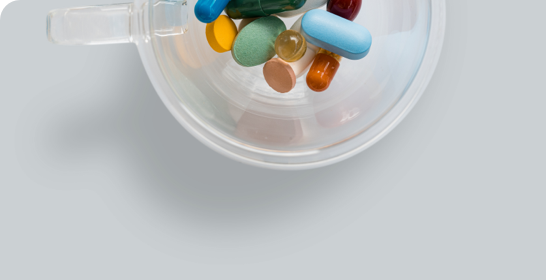We use cookies to make your experience better. To comply with the new e-Privacy directive, we need to ask for your consent to set the cookies. Learn more.
CurQreal C95 - Turmeric [Curcuma Longa] 95% curcuminoids powder extract
Synonym(s):
- Curcumin extract; Curcuma Longa extract; Curcumin curcuminoids
- CAS Number: 84775-52-0
- EC Number: 283-882-1
CurQreal C95 - Turmeric [Curcuma Longa] 95% curcuminoids powder extract
CurQreal Key Facts
- CurQreal represents a range of premium quality of curcumin extracts, standardised to 95% curcuminoids and a minimum of 70% Curcumin.
- CurQreal is manually harvest and extracted from high quality carefully selected turmeric rhizomes using a proprietary extraction process
- CurQreal is a pure, unadulterated curcumin extract, free from contaminants and fully compliant to EU regulations
Background
Curcumin is extracted from turmeric, a traditional Indian spice that comes from the rhizomes of Curcuma Longa. This spice has traditionally been used for cooking and as a colouring agent (food colour). In more recent years, curcumin has gained significant popularity as a nutritional supplement. First isolated in 1815 by Vogel and Pelletier, curcumin has been widely studied since, with countless purported health benefits, the extraction and production of curcumin is an ever-growing business.Purity
The increase in popularity has created fierce competition within the market, leading to the quality of some extracts decreasing as well as the industry being littered with curcumin imitators and adulterated products. CurQreal is 100% natural and free from any such contamination, it has been tested for C14 Carbon analysis to prove that it is free from any such adulteration.Bioavailability
The main issue that arises when using curcumin as a nutritional aid and for therapeutic use is that it possesses a poor bioavailability, this is due to its poor absorption and rapid metabolism of curcumin. However, this poor oral bioavailability can be circumvented by combining curcumin with piperine, the active ingredient in black pepper. Bioavailability of Curcumin when co-administered with piperine was enhanced by 20-fold / 2000% compared to the bioavailability of curcumin alone. We here at Vita Actives have a high quality piperine product, called Actamide.At present, we have the following variants of CurQreal
CurQreal C95 - Turmeric [Curcuma Longa] 95% curcuminoids powder extract
CurQreal C95DC - Turmeric [Curcuma Longa] 95% curcuminoids DC granular powder extract
CurQreal C95-ORG - Turmeric [Curcuma Longa] 95% curcuminoids [HPLC] powder extract [Certified Organic]
CurQreal C95DC-ORG - Turmeric [Curcuma Longa] 95% curcuminoids [HPLC] powder extract [Certified Organic]
Chemistry
Turmeric contains bioactive compounds known as curcuminoids, the three curcuminoids are curcumin (Diferuloylmethane), demethoxycurcumin (DMC) and bisdemethoxycurcumin (BDMC). These curcuminoids are what result in the positive health benefits of the turmeric extract. Curcumin is the most abundant curcuminoid present in turmeric, accounting for 70% of the curcuminoid content. Curcumin is the most widely studied curcuminoid and thought to be the most pharmacologically active.Brief Identification of Curcuminoids
Curcumin
CAS – 458-37-7Molecular Formula – C21H20O6
Molecular Weight – 368.4 g/mol
IUPAC - (1E,6E)-1,7-bis(4-hydroxy-3-methoxyphenyl)hepta-1,6-diene-3,5-dione
Demethoxycurcumin
CAS – 22608-11-3Molecular Formula – C20H18O5
Molecular Weight – 338.4 g/mol
IUPAC - (1E,6E)-1-(4-hydroxy-3-methoxyphenyl)-7-(4-hydroxyphenyl)hepta-1,6-diene-3,5-dione
Bisdemethoxycurcumin
CAS – 33171-05-0Molecular Formula – C19H16O4
Molecular Weight – 308.3 g/mol
IUPAC - (1E,6E)-1,7-bis(4-hydroxyphenyl)hepta-1,6-diene-3,5-dione
Curcumin and Health
Curcumin has been shown to possess numerous health benefits, including free radical scavenging, antioxidant, chemo preventive and anti-inflammatory effects.Anti-inflammatory
Chronic inflammation plays a vital role in the development of many diseases and illnesses such as cancer, cardiovascular disease, autoimmune diseases and neurodegenerative diseases. Curcumin has been found to decrease inflammation by interacting with many inflammatory processes. Not only has curcumin been shown to regulate the expression of inflammatory cytokines such as TNF- α, IKKβ kinase, IL-6 and IL-8 (Kim et al., 2011), but curcumin also enhances the activity of numerous antioxidant enzymes such as catalase, superoxide dismutase and glutathione peroxide (Henrotin et al., 2010). As well as this, curcumin has been shown to possess excellent free radical scavenging effects (Sreejayan & Rao, 1997; Ak & Gülçin, 2008).Obesity
It is known that the accumulation of excess body fat leads to the overexpression of proinflammatory adipokines by adipose tissue, contributing to systemic metabolic dysfunction in people with obesity. Curcumin has not only shown to directly interact with adipose tissue to supress inflammation (Bradford, 2013), but the ingestion of curcumin has been shown to actually help in a reduction of body weight (Ejaz et al., 2009; Weisberg et al., 2008) as well as reducing serum triglyceride concentrations (Mohammadi et al., 2013).Cancer
Curcumin is one of the most promising bioactive natural compounds in the treatment of several cancer types. Curcumin exhibits anticancer ability by targeting different cell signalling pathways such as growth factors, cytokines, transcription factors, and genes modulating cellular proliferation and apoptosis (Giordano & Tommonaro, 2019). Curcumin treatment has also been shown to cause the overexpression of P53 levels in tumour cells, in turn promoting apoptosis, as well as suppressing the activity of protein kinases which play an essential role in various cellular responses, including the regulation of cell growth, proliferation, division, survival and death (Kotha & Luthria, 2019).Trademark
CurQreal is a trademark of Vita Actives, EU trademark number 013807813.References
- Bradford, P., 2013. Curcumin and obesity. BioFactors, 39(1), pp.78-87.
- Ejaz, A., Wu, D., Kwan, P. and Meydani, M., 2009. Curcumin Inhibits Adipogenesis in 3T3-L1 Adipocytes and Angiogenesis and Obesity in C57/BL Mice. The Journal of Nutrition, 139(5), pp.919-925.
- Giordano, A. and Tommonaro, G., 2019. Curcumin and Cancer. Nutrients, 11(10), p.2376.
- Henrotin, Y., Clutterbuck, A., Allaway, D., Lodwig, E., Harris, P., Mathy-Hartert, M., Shakibaei, M. and Mobasheri, A., 2010. Biological actions of curcumin on articular chondrocytes. Osteoarthritis and Cartilage, 18(2), pp.141-149.
- Kim, K., Lee, E., Park, J., Lee, J., Kim, J., Choi, H., Kim, B., Lee, H., Lee, K. and Yoon, S., 2011. Curcumin Attenuates TNF-α-induced Expression of Intercellular Adhesion Molecule-1, Vascular Cell Adhesion Molecule-1 and Proinflammatory Cytokines in Human Endometriotic Stromal Cells. Phytotherapy Research, 26(7), pp.1037-1047.
- Kotha, R. and Luthria, D., 2019. Curcumin: Biological, Pharmaceutical, Nutraceutical, and Analytical Aspects. Molecules, 24(16), p.2930.
- Mohammadi, A., Sahebkar, A., Iranshahi, M., Amini, M., Khojasteh, R., Ghayour-Mobarhan, M. and Ferns, G., 2012. Effects of Supplementation with Curcuminoids on Dyslipidemia in Obese Patients: A Randomized Crossover Trial. Phytotherapy Research, 27(3), pp.374-379.
- Sreejayan and Rao, M., 1997. Nitric Oxide Scavenging by Curcuminoids. Journal of Pharmacy and Pharmacology, 49(1), pp.105-107.
- Tuba, A. and Gülçin, İ., 2008. Antioxidant and radical scavenging properties of curcumin. Chemico-Biological Interactions, 174(1), pp.27-37.
- Weisberg, S., Leibel, R. and Tortoriello, D., 2008. Dietary Curcumin Significantly Improves Obesity-Associated Inflammation and Diabetes in Mouse Models of Diabesity. Endocrinology, 149(7), pp.3549-3558.
Write Your Own Review
Explore your sector
Vita Actives manufacture, source, stock and distribute the highest quality bulk ingredients for pharmaceutical, nutraceutical, cosmeceutical and veterinary finished product manufacturers. We also supply tailor-made raw materials and finished nutritional supplements.




